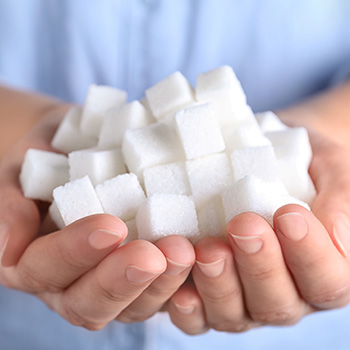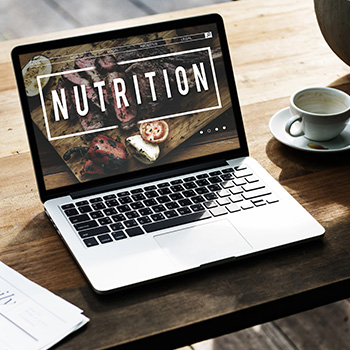 In today’s fast-paced world, convenience is key. Many of us are guilty of grabbing food products based on how appealing they look or because of catchy claims on the front of the package. But here’s the thing: the attractive branding and bold health claims are designed to make you buy, not necessarily to keep you informed. While the front of the box might tempt you to put the item in your shopping cart, the real story lies on the back—on the nutrition label and ingredients list.
In today’s fast-paced world, convenience is key. Many of us are guilty of grabbing food products based on how appealing they look or because of catchy claims on the front of the package. But here’s the thing: the attractive branding and bold health claims are designed to make you buy, not necessarily to keep you informed. While the front of the box might tempt you to put the item in your shopping cart, the real story lies on the back—on the nutrition label and ingredients list.
As someone who cares deeply about both health and wealth, I’ve noticed that being informed about what we consume affects not only our physical well-being but also our financial well-being. Think about it—your food choices can affect your long-term health, which could lead to unexpected medical expenses. So, let’s talk about the importance of understanding food labels and why it’s crucial to go beyond the marketing on the front of the package.
Misleading Health Claims
Manufacturers are well aware that certain buzzwords grab attention. You’ve probably seen terms like “low-fat,” “natural,” or “multigrain” plastered on the front of food packages. While these terms sound healthy, they can often be misleading.
“Light” or “Low-Fat” Products
You might think you’re doing your body a favor by choosing light or low-fat versions of your favorite foods. However, manufacturers don’t advertise that when they remove fat or calories, they often add sugar or artificial ingredients to make up for the taste and texture. This means that, despite being low in fat, the product could be packed with hidden sugars or chemical substitutes.
“Multigrain”
This label might make you think you’re eating a wholesome, nutrient-dense product. However, multigrain simply means the product contains more than one type of grain. It doesn’t mean those grains are whole. Most of the time, the grains are highly refined, stripping away their natural nutrients and leaving you with a product that has little health benefit.
“Natural”
This is one of the most misleading terms. It may sound like you’re getting something pure and unprocessed, but “natural” only means that the product started with a natural source. It doesn’t guarantee that the end product resembles anything natural. In many cases, sugar substitutes or additives are used to keep the product shelf-stable and appealing.
The Sugar Game
 When you flip over to the nutrition label, it’s easy to spot the grams of sugar. But be wary. Sugar comes in many disguises. Manufacturers can use a variety of sweeteners that sound healthier but are still just sugar. Look out for names like dextrose, molasses, raw sugar, fruit nectar, cane crystals, brown sugar, sucralose, and more. These hidden sugars add up quickly, especially in products that advertise themselves as low-calorie or low-fat.
When you flip over to the nutrition label, it’s easy to spot the grams of sugar. But be wary. Sugar comes in many disguises. Manufacturers can use a variety of sweeteners that sound healthier but are still just sugar. Look out for names like dextrose, molasses, raw sugar, fruit nectar, cane crystals, brown sugar, sucralose, and more. These hidden sugars add up quickly, especially in products that advertise themselves as low-calorie or low-fat.
The catch is to make up for the reduced calories, fat, or carbs, manufacturers often add extra sugar or artificial sweeteners. So, while you might think you’re making a healthier choice, you could be consuming more sugar than you realize.
Refined and Enriched Products
Another trick to watch for is highly refined products. Foods that have been stripped of their natural nutrients (such as white bread or white rice) often have to be “enriched,” meaning the manufacturer adds back vitamins and minerals that were lost in processing. The problem is that the end product is still a far cry from its original, whole-food form. This also applies to fruit-flavored products. The bright fruit images may make you believe you’re getting real fruit, but most of the time, you’re getting sugar, chemicals, and artificial flavors designed to taste like fruit.
Tools to Help You Read Labels
The good news is that there are resources out there to help you decode food labels and make informed decisions. Social media has opened up a world of information, and there are a few accounts I highly recommend for practical advice on reading food labels:
- @cleankitchennutrition: Focuses on educating people about clean eating and understanding ingredient lists.
- @meowmeix: Offers great visual guides to what’s really in your food and how to choose healthier options.
- @imjustwasim: My personal favorite is this account, which breaks down food myths and gives you straightforward advice on what to avoid.
Bringing in the Experts
 In my most recent podcast, I’m thrilled to bring on Dr. Nancy Bertelmann from Lakeland Natural Health. We’ll be diving deeper into the world of food labels and the importance of understanding what’s actually in your food. If you’ve ever wondered whether you’re truly making healthy choices, this is a conversation you won’t want to miss.
In my most recent podcast, I’m thrilled to bring on Dr. Nancy Bertelmann from Lakeland Natural Health. We’ll be diving deeper into the world of food labels and the importance of understanding what’s actually in your food. If you’ve ever wondered whether you’re truly making healthy choices, this is a conversation you won’t want to miss.
Reading food labels might seem like an extra step in your busy life, but it’s one that pays off in the long run. By taking the time to read and understand the ingredients, you’re not only taking control of your health but also protecting your financial future from the costs of poor dietary choices.
October 2024




